
News |
- Ontario Choosing Climate Leadership
- Boreal Summit - White Elephant
- NEB Loses All Credibility Ignoring Climate Change
- Manitoba Hydro Denied Rate Hikes
- WHS - Lands Not Protected
- Planetary Boundaries Now Crossed
- Pimicikamak Apology Too Little
- More Oil Means More Spills
- Energy East Pipeline Too Many Risks Too Much Impact
- Manitoba to Minnesota Transmission Route Selected
- Tar Sands Impact On Climate Too Costly
- Is Monsanto Killing Us?
| Ontario Choosing Climate Leadership | 20 February 2015 |

Engaging the public in a conversation about climate change builds on Ontario's recent achievements including closing coal plants, curbing the use of cosmetic pesticides and protecting 1.8 million acres of land. These initiatives have resulted in fewer smog days and cleaner water. Ontario’s role in the Canadian Council of Ministers of the Environment (CCME) and First Minister’s Conference with respect to climate change will be known this Spring.
View Ontario’s Climate Change Discussion Paper 2015 |
|
 Print version Print version |
Top |
| Boreal Summit - White Elephant | 20 February 2015 |
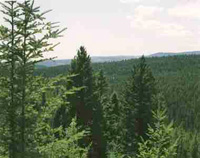
Around 60 people attended this invite only summit. Only one Chief attended – Ron Evans from Norway House. All other First Nation representatives were councilors and proxies. Several environmental organizations attended as did the Honourable Gord Mackintosh, Minister of Conservation. The Honourable Eric Robinson arrived late in the day. Before the summit a poll of Manitobans was released showing an apparent 88% in favour of protecting 50% of the remaining boreal forest in Manitoba. An invite only summit cannot define nor constitute community engagement or provide open dialogue for proper protection and conservation of the boreal forest in Manitoba. Manitoba Wildlands hopes our government keeps its commitments regarding establishment of parks and protected areas. Our boreal regions are under-represented in Manitoba’s Network of Protected Areas.
View February 19, 2015 Thompson Citizen article |
|
 Print version Print version |
Top |
| NEB Loses All Credibility Ignoring Climate Change | 20 February 2015 |
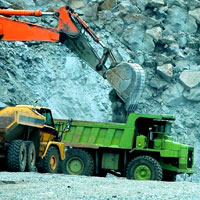
"Peter Watson, the head of the NEB, needs to listen to the tens of thousands of Canadians demanding the huge climate impacts of the Energy East tar sands pipeline be included as part of the pipeline review," said Mike Hudema, Climate and Energy campaigner with Greenpeace Canada. The Energy East pipeline would transport 1.1 million barrels per day of toxic tar sands oil from Alberta to the Atlantic Ocean, traversing at least 90 watersheds and 961 waterways between Alberta and New Brunswick—including some protected by Indigenous treaty rights. Recent changes to Canada's environmental review processes, including the language of the National Energy Board Act, mean that only people who the NEB considers to be "directly affected" by the pipeline and The who choose from a pre-determined list of issues are allowed to provide input into the review. Climate change is not on the list of issues, although participants are invited to share their concerns related to marine shipping.
View February 4, 2015 Toronto350.org article |
|
 Print version Print version |
Top |
| Manitoba Hydro Denied Rate Hikes | 7 February 15 |

The Public Utilities Board (PUB) said it was "extremely reluctant" to be asked to approve a rate increase for next year in such a period of volatility. The PUB also recommends that the Manitoba government subject Hydro’s plans to build the Bipole III transmission line and two new generation stations, Keeyask and Conawapa, to a review by an independent panel. The full decision, available on PUB’s website, can be seen as a public rebuke of Hydro’s plan to spend $20 billion over the next decade -- a plan supported by the Selinger government -- and the risk it poses to Manitobans. Hydro said in its application it needs the rate increases at double the rate of inflation over the next two years to help ensure its financial integrity under its $20.1-billion development. Ratepayers help pay for the construction of the Keeyask dam, the Bipole III transmission line, the Manitoba-Minnesota Transmission Project (MMTP) and other upgrades to the electricity distribution system. To put it in very basic language, Manitoba Hydro wants to raise its rates in order to be able to pay for its already substantial debt and stay afloat as a business while it builds Bipole 3, Keeyask and MMTP.
View January 29, 2015 The Carillon article |
|
 Print version Print version |
Top |
| WHS - Lands Not Protected | 7 February 15 |

The first submission suffered a setback when UNESCO's world heritage committee deferred its decision on Pimachiowin Aki’s original bid more than a year ago. The UNESCO committee said was unclear if the area is unique. When it made its decision about the first World Heritage Site proposal, UNESCO said it wanted more information on the cultural value the 33,400-square-kilometre area has to First Nations people. ‘Unfortunately the lands three of these First Nations have identified for protection are still not protected from mining. The Manitoba regulatory steps for protected lands have been consistent since 1989. The state, or in this case, the province, is responsbile to UNESCO and the IUCN to get this done.’ Reported Gaile Whelan-Enns, Director, Manitoba Wildlands.
View January 26, 2015 Winnipeg Free Press article |
|
 Print version Print version |
Top |
| Planetary Boundaries Now Crossed | 7 February 15 |

"Transgressing a boundary increases the risk that human activities could inadvertently drive the Earth System into a much less hospitable state, damaging efforts to reduce poverty and leading to a deterioration of human wellbeing in many parts of the world, including wealthy countries," says lead author, Professor Will Steffen, researcher at the Stockholm Resilience Centre and the Australian National University, Canberra. "In this new analysis we have improved our quantification of where these risks lie." "Planetary Boundaries do not dictate how human societies should develop but they can aid decision-makers by defining a safe operating space for humanity," says co-author Katherine Richardson from the Center for Macroecology, Evolution and Climate, University of Copenhagen.
View Stockholm Resilience Centre publication |
|
 Print version Print version |
Top |
| Pimicikamak Apology Too Little | 30 January 2015 |

Selinger agreed to visit Cross Lake following a six-week occupation of the Jenpeg generation station last fall by Pimicikamak. Protesters had said they wouldn’t leave the grounds of the dam until they received a personal apology from the premier. “The apology does not fix the past. It does not even fix the present,” Chief Catherine Merrick of Cross Lake said. “Our lands, waters and resources are still a mess. Our people still lack a fair share of the opportunity generated by the river. Our people still have to face debilitating hydro bills.” The real question is wether the Manitoba government understands that apologizing to a treaty created band is not addressing or apologizing to Pimicikamak? Aboriginal constitutional rights pre-date treaty rights.
View January 26, 2015 The Council of Canadians article |
|
 Print version Print version |
Top |
| More Oil Means More Spills | 30 January 2015 |
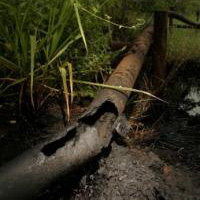
These kinds of spills can kill vegetation and ruin farmland, have been increasing in Western North Dakota as the state has become a leading oil producer, pumping more than a million barrels of crude a day from the Bakken Shale. Another spill in Montana has contaminated the drinking water of the town of Glendive, leaking as much as 40,000 gallons of crude and fouled the drinking water of its 6.000 residents. That is two major spills in less than two weeks. The aging Poplar Pipeline that spilled oil into the Yellowstone River in Montana was built with pipe made using faulty welding techniques. Dependency on oil means more oil to fuel consumption and more spills. More spills mean more environmental impact and more risk to our water and being able to live in a healthy environment. Using aging pipelines to cut costs is putting the public and the environment at risk.
View January 23, 2015 RT News article |
|
 Print version Print version |
Top |
| Energy East Pipeline Too Many Risks Too Much Impact | 30 January 2015 |
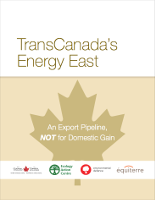
The more oil is extracted and transported, the more frequent spills are bound to occur and endanger communities. While certain infrastructures offer some degree of protection, when faulty, the consequences associated with oil spills are devastating. Over the last few years, Canada’s federal government invested millions of dollars in an attempt to convince an American audience to buy into their expanding fossil fuel projects, even though most Canadians are unconvinced by their leadership’s ability to protect them from oil spills. With the recent pipeline failure in Montana and the diesel spill in Canada’s Saint Lawrence river, citizens have ample reason to have reservations the safety of fossil-fuel related projects. All monies the Canadian government has put into marketing tar sands, at home and abroad, have been public funds.
View January 20, 2015 The Tree article |
|
 Print version Print version |
Top |
| Manitoba to Minnesota Transmission Route Selected | 17 January 2015 |
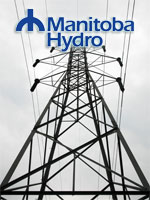
The environment act scoping document for the project, which will direct content of the Environmental Impact Statement (EIS) for the public reviews, hearings and decision about this transmission project, is currently under public review. It is posted in Manitoba Conservation’s public registry. Several First Nations are affected by the project, and Aboriginal Consultations through the Manitoba government apparently will not start until the EIS is filed. Several communities, and numerous property owners are also affected. The final route does not use much public land, which are available for treaty land entitlement selections. Some existing road and transmission corridors lands are used for the route. The tall grass prairie preserve in south eastern Manitoba appears to not be affected. Minister Mackintosh, Conservation and Water Stewardship, is responsible for the regulatory process and final decision about the transmission project. He will need the outcomes from the CEC hearings and the results from Aboriginal consultations in order to make a licensing decision.
View Manitoba Hydro Manitoba-Minnesota Transmission Line Project |
|
 Print version Print version |
Top |
| Tar Sands Impact On Climate Too Costly | 17 January 2015 |
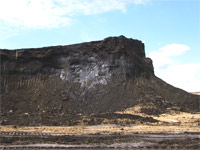
The study, published in the journal Nature, includes Alberta oil sands and considers the geographic distribution of the world’s total fossil fuel supply, including oil, coal and natural gas reserves, and their potential impact on international efforts to curb global warming. “I think the most sobering thing from this study is the gulf that it reveals between the declared intention of the politicians and the policy-makers to stick to two degrees, and their willingness to actually contemplate what needs to be done if that is to be even remotely achieved,” said Paul Ekins, a co-author of the study. Canada, where the tar sands are located, repeatedly delays, or blocks regulation of oil and gas emissions.
View January 12, 2015 Environment Defence article |
|
 Print version Print version |
Top |
| Is Monsanto Killing Us? | 17 January 2015 |

Where will it stop? The science is in. Monsanto’s Roundup and genetically modified seeds are killing us slowly. In a controlled bubble of pure laboratory isolation the compounds in Monsanto’s Roundup and the combination of genetically modified seeds appear to be a perfectly understandable equation. Roundup kills plants because it shutdowns the seven step metabolic system of plants called the shikimate pathway and keeps it from absorbing food. Genetically modified seeds designed to work with Roundup are the second half of this equation. These two factors isolated at one end of the food chain do not readily show any risk factors. This view of the world is what has gotten Monsanto to where it is today and has convinced policy makers to not doubt Monsanto’s information. The United State Drug and Food Administration did not test the residual impact of glyphosphate – the only active ingredient in the most widely used herbicide in the world. That same metabolic structure found in plants is also found in the mitochondrial workings of the good and friendly bacteria found in human digestive tracts. Our gut is where the enzymes needed for proper growth and brain function live. Glyphosphate kills friendly bacteria in our gut just as easily as it kills plants. A very strong correlation has been found between the rise in autism and the rise in the use of Roundup. Autism is all about a healthy gut – the ability of the body to process the amino acids necessary for brain development and function. Cumulative impacts of glyphosphate being so widely used is taking its toll – especially when the combination of inert ingredients in Roundup can amplify the toxicity of glyphosphate 10-100 times. Glyphysphate is used on both corn and soy crops – the two most common ingredients used as both sweetener and filler in food products today.
View Petition to ban the sale of Roundup, Monsanto's toxic weedkiller |
|
 Print version Print version |
Top |


 RSS Feeds:
RSS Feeds: